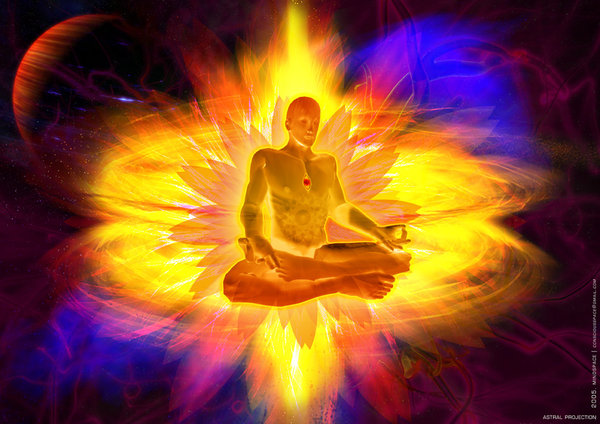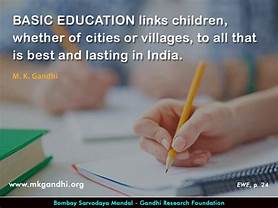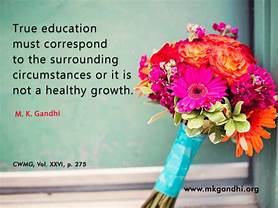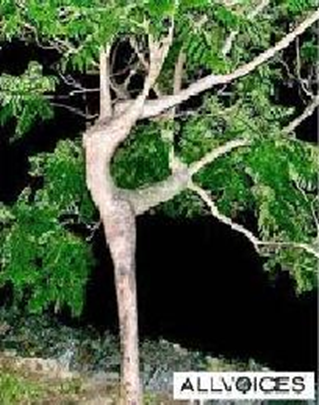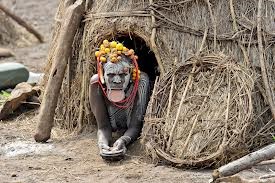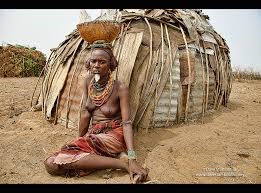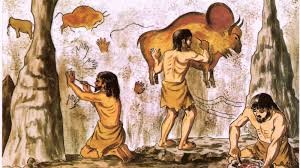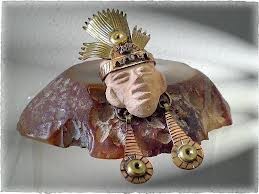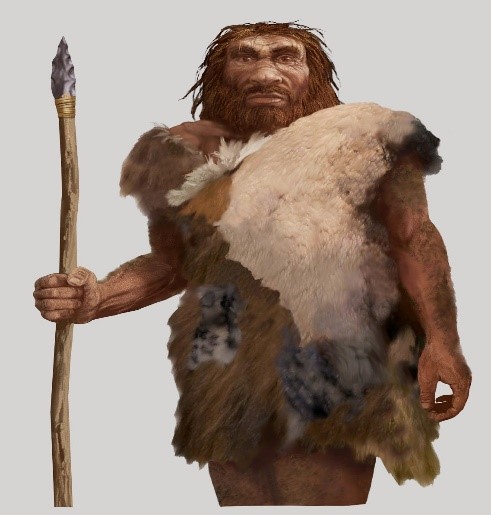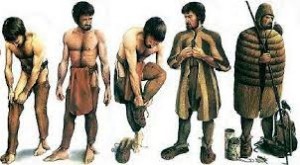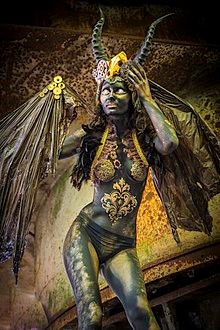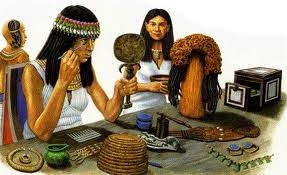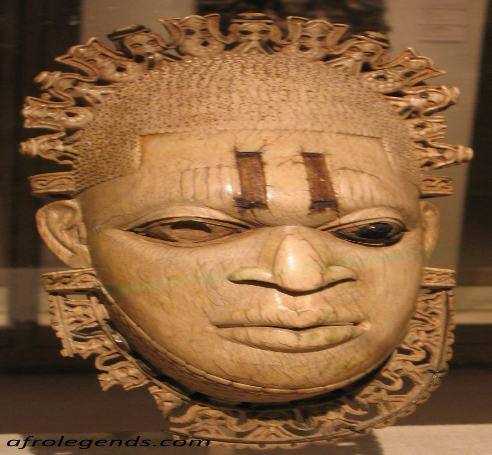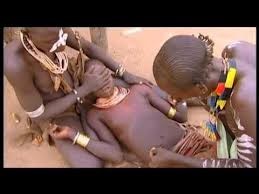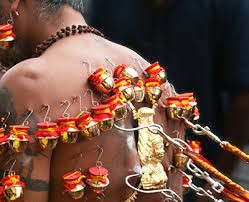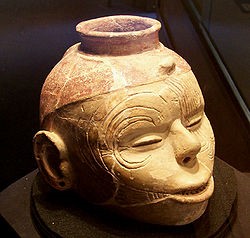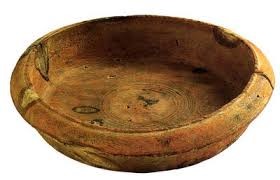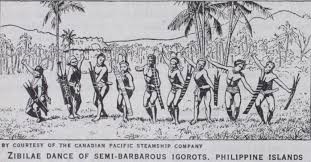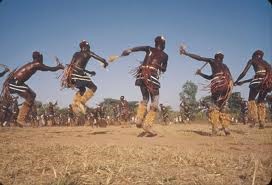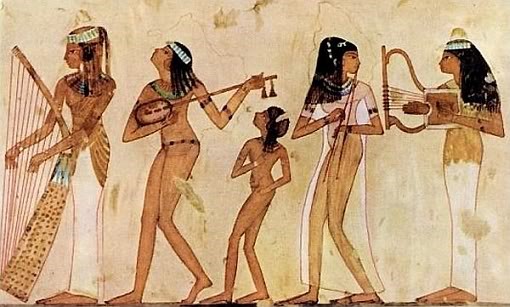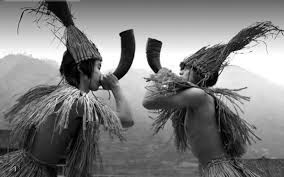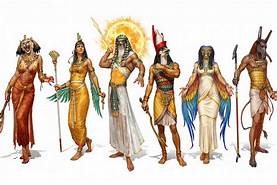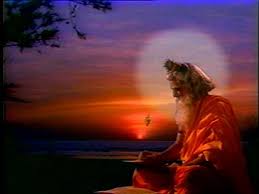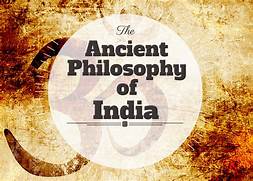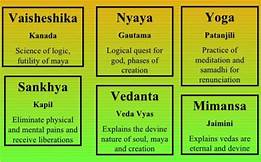Dr. V.K.Maheshwari, M.A. (Socio, Phil) B.Sc. M. Ed, Ph.D.
Former Principal, K.L.D.A.V.(P.G) College, Roorkee, India
Manjul Lata Agrawal. M.A. (History) B.T.
Former Principal S.K.V, Delhi Cantt. Delhi.
HERE ARE FEW HINDU RELIGION TERNS GENRALLY FORGOTTE
ACHAMANA :
This is a rite practiced by those of the
Hindu belief. It is a rite in which a worshipper purifies
himself by thinking of pure things while sipping water
and sprinkling water around him. In some ways it is
similar to the sprinkling of water during a Christian
ceremony. The Hindu, having done this, can then retire
into a peaceful state of meditation.
ADHARMA :
This indicates lack of virtue, lack of
righteousness. The poor fellow probably does not
abstain from any of the Five Abstinences.
AGAMA :
A Scripture, or in Tibet a Tantra. It can be
used to indicate any work which trains one in mystical
or metaphysical worship.
AGAMI KARMA :
This is the correct term for Karma.
It means that the physical and mental acts performed by
one in the body affect one’s future incarnations. It is like a saying as one sows so
shall one reap, which is much the same as saying that if
you sow the seeds of wickedness then you shall reap
wickedness, but if you sow the seeds of good and help
for others then the same shall be returned to you ‘a
thousandfold.’ Such is Karma.
AHAMKARA :
The mind is divided into various parts,
and Ahamkara is the sort of traffic director which
receives sense impressions and establishes them as the
form of correct facts which we know, and which we can call to
mind at will.
AHIMSA :
Apolicy oof peace, of non-violence. It is refraining from
harming any other creature in thought, deed, or word.
AJAPA :
This is a special Mantra. The Easterner
believes that breath goes out with the sound of ‘AJ,’
and is taken in with the sound ‘SA.’ Hansa is the sound
of human breathing. ‘HA,’ breath going out ; ‘N’ as a
conjunction ; ‘SA,’ breath coming in. We make that
subconscious sound fifteen times in one minute, or
twenty-one thousand six hundred times in twenty-four
hours
AJNA CHAKRA :
This is the sixth of the commonly
accepted figure of seven of the known Yogic centres of
consciousness.
Ajna chakra is the Lotus at the eyebrow level, a
Lotus, in this case, with only two petals. This is a part
of the sixth-sense mechanism. It leads to clairvoyance,
internal vision, and knowledge of the world beyond this
world.
AKASHA :
Many people refer to this as ether, but a
rather better definition would be — that which fills all
space between worlds, molecules, and everything. The
matter from which everything else is formed.
ANAHATA CHAKRA :
The symbolism of this
Chakra is The Wheel or The Lotus.
This is a Chakra at the level of the heart. It has
twelve petals of a golden colour.
Below this Anahata centre is another manifestation
of The Lotus, one with an eight-petal arrangement
which stirs and waves slightly when one does
meditation.
The Anahata Chakra is the fourth of the seven
commonly known Yogic centres of consciousness.
ANAHATA SHABDA :
This means a sound which is
not an actually perceived sound. Instead, it is an
impression of sound which is often heard during
meditation when one has reached a certain stage. The
sound, of course, is that of the Mantra Om.
ANANDA :
Pure joy. Joy and pleasure unalloyed by
material concepts. It indicates the bliss and happiness
which one experiences when one can get out of the
body consciously and be aware of the absolute rapture
of being free, even for a time, from the cold and
desolate clay sheath which is the human body on Earth.
ANTAHKARANA :
Vedantaphilosophy, uses this word when referring to the mind
as it is used in controlling a physical body.
APARIGRAHA :
This is the fifth of the Abstinences.
It indicates that one should take the Middle Way in all
things, being not too good but not too bad, avoiding
extremes and being balanced.
ASANA :
This is a posture, or sitting position, and is
used when preparing to meditate.
The Great Masters have tried to create a sensation, tried to
increase their own self-advertised status by ordering
that their Yogic students should indulge in all sorts of
ridiculous and fantastic contortions.
The only thing you have to do in order to meditate is
to sit comfortably, and then you are definitely in the
correct position.
ASAT :
All those things which are unreal or illusory.
This is the World of Illusion, the world of unreality.
The World of the Spirit is the real world.
The opposite of Asat is Sat, that is, those things
which are real.
ASHRAMA :
This means a place wherein Teacher and
pupils reside. Often it is used to denote a hermitage, but
it can also be used to indicate the four main stages into
which life on Earth is divided. Those stages are :
1. The celibate student.( BRAMCHAYA)
2. A married person who thus is not celibate. (GRAHSTHA)
3. Retirement and contemplation.(VANAPRASTHA)
4. The monastic life, and monastic, you may like to
be reminded, indicates a solitary life.( SANYAS)
ASMITA :
Conceit, egoism, and the puffed-up pride of
the unevolved human. As a person evolves Asmita
disappears.
ASTRAL :
This is a term which is generally used to
indicate the place or condition that one reaches when
one is out of the body.
ATMA :
Some people call it Atman. Vedantic
philosophy regards the Atma or Atman as the
overriding spirit, the Overself, the Ego, or the Soul.
AURA :
Just as a magnet has lines of force about it so
has the body lines of force, but these are lines of force
in different colours, covering a wider range of colours
than human sight could ever see without the aid of
clairvoyant abilities.
AVASTHAS :
A word descriptive of the three states of
consciousness which are :
1. The waking state, during which one is in the body
more or less conscious of things going on about one.
2. The dream world, in which fantasies of the mind
become intermingled with the realities experienced
during even partial astral travel.
3. The deep sleep of the body when one does not
dream, but one is able to do astral travelling.
AVATAR or AVATARA :
This is a very rare person
nowadays. It is a person who has no Karma, a person
who is not necessarily human, but one who adopts
human form in order that humans may be helped. It is
observed that an Avatar (male) or Avatara (female) is
always higher than human.
AVIDYA :
This is a form of ignorance. It is the
mistake of regarding life on Earth as the only form of
life that matters. Earth life is merely life in a classroom,
the life beyond is the one that matters.
BHAGAVAN :
A term indicative of one’s personal
God. The God whom we worship irrespective of the
name which we use, and in different parts of the world
different names are used for the same God.
BHAJAN :
A form of worship of one’s God through
singing. It does not refer so much to spoken prayers,
but is specifically related to singing. One can chant
prayers, and that would be Bhajan.
BHAKTA :
One who worships God, a follower of
God. Again, it must be stressed that this can be any
God, it does not relate to any particular creed or belief,
but is a generic term.
BHAKTI :
An act of devotion to one’s God. The act of
identifying oneself as a child of God, as a subject of
God, and admitting that one is subservient and obedient
to God.
BHAVA :
This is being, feeling, existing, emotion.
Among human beings there are three stages of Bhavas :
1. The pashu-bhava is the lowest group of people
2. The vira-bhava are the middle group. They have
ambition and desire to progress upwards. They are
strong, and frequently have quite a lot of energy.
3. This group, the divya-bhava, is of a much better
type, with harmonising people who are thoughtful,
unselfish, and really interested in helping others
unselfishly.
BODHA :
That knowledge which can be imparted to
another person whom one is teaching. It is also referred
to as wisdom or understanding.
BRAHMA :
A Hindu God frequently represented with
four arms and four faces and holding various religious
symbols
BRAHMALOKA :
This is that plane of existence
where those who have succeeded in the Earth life go
that they may commune with others in the next plane of
existence. It is a stage where one lives in divine
communication while meditating on and preparing for
fresh experiences.
BRAHMA-SUTRAS :
All these words come from
India, and the Brahma-Sutras are very famous
aphorisms which place before one the principal
Teachings of the Upanishads.
BREATH :
One should also give it the name of
Pranayama, but as this would mean nothing to the
majority of people, let us be content with the word
Breath.
BUDDHA :
This is not a God, this is a person who has
successfully completed the lives of a cycle of existence,
and by his success in overcoming Karma is now ready
to move on to another plane of existence.
A Buddha is a person who is free from the bonds of
the flesh. The one who is frequently referred to as ‘The
Buddha’ was actually Siddhartha Gautama. He was a
Prince who lived some two thousand five hundred years
ago in
BUDDHI :
A word meaning wisdom, and we must
always keep before us the awareness that wisdom and
knowledge are quite different things
CHAITANYA :
A state when the spiritual
consciousness has just been awakened, and one is alert
and ready to progress upwards, taking the first steps to
leave the causal body behind one.
CHAKRAS :
We should concentrate upon the six
Chakras. Along our spine, like wheels threaded along
our spinal column, are the six main Chakras or centres
of psychic consciousness. There are various centres
which keep our causal body in touch with our higher
bodies, in touch with our higher centres.
CHITTA :
This is the lower mind. There are three
parts of the mind, or it might be better to say mindstuff.
The first is Manas ; the second is Buddhi ; and the
third is Ahamkara. The first, of course, is the lowest.
CONCENTRATION :
This is the art of devoting one’s
full attention to one thing, it may be a physical thing or
an intangible thing, such as an idea.
DEVA :
A Deva is a Divine Being, one who is quite
beyond the human state. Anyone who has attained to
the necessary degree of enlightenment and purity, and
is no longer on this Earth, could be a Deva.
Nature Spirits and manmade thought forms are not,
and cannot ever be Devas of the human type, although
naturally Nature Spirits and Animal Spirits have their
own Group-Devas.
DEVILS :
These people are the negative of the positive
of good. It follows that if there were no devils there
would be no Gods ! If we have a positive we must have
a negative otherwise the positive could not exist.
DHANURASANA :
This Dhanurasana is a Yogic Posture sometimes
termed the Bow Posture
DHARMA :
This word can indicate merit, good
morals, righteousness, truth, or a way of life. Its true
meaning, however, is ‘that which holds your true
nature.’
DHAUTIS :
Dhautis is a system of purification of the physical
body, and does not confer any psychic abilities. Certain
people in India swallow air and expel it forcibly in
various unusual ways. Afterwards they swallow water
and expel that in the same unusual ways.
DHYANA :
This is a meditation or a deep form of
concentration. It is an unbroken flow of thought
towards that upon which one concentrates. It is a word
which in Raja Yoga is known as the Seventh of the
Eight Limbs.
DIKSHA :
This is the art of initiating a student into
spiritual life, and is carried out by the Teacher or Guru
concerned.
DIVINITY :
This is one of the very old original
Sanskrit words. It goes back to the earliest days of
Mankind. It means ‘to shine.’ Often a Diva or a
Godlike person will be known as ‘The Shining One.’
DREAMS :
One of the most misunderstood subjects of
all. Because of Western Man’s conditioning Western
Man can rarely believe in astral travelling and such
things, thus it is that when the astral body rejoins the
physical body complete with a lot of most interesting
memories
DWAPARAYUGA :
Throughout the world in world
religions there are various systems which divide the life
of this world into different periods or cycles
DWESHA :
This is aversion, dislike as opposed to
like. It goes back into the memory department. If we
have had a severe shock we dislike that which caused
the shock, and we try to avoid getting such shocks in
the future.
ETHERIC DOUBLE :
This is the substance existing
between the physical body and the aura. The etheric is
of a bluish-grey colour, and is not substantial like flesh
and bone. The etheric can pass through a brick wall,
leaving both intact.
The etheric double is the absolute counterpart of the
human flesh and blood body, but in etheric form. The
stronger a person’s physical, the stronger will be the
etheric. When a person dies, and that person has had a
certain gross interest in life, his etheric double is
physically very strong and he leaves a ghost which,
through habit, acts in precisely the same way as the
person did while in the physical body.
EVOLUTION :
Everything is in a state of evolution.
A child is born as a helpless baby, and gradually
evolves into an adult. People go to school, and their
evolution is such that they progress from class to class.
Men do not become angels on the earthly stage of
evolution any more than animals turn into humans on
this world. All must evolve according to the plans of
the Universe, and according to their own species.
The development of Man, or Mankind, has been
proceeding for many millions of years.
EXPERIENCES : Many people during their time upon
Earth have ‘experiences.’ They imagine they see things,
or they actually do see things. They could be surer if
they kept more accurate reports.
FAITH :
Faith is no idle, senseless, ignorant belief. Faith
grows and grows as one explores that in which one has
faith.
FEAR :
One of the greatest dangers in any form of
occult study is of being afraid. In the East teachers tell
the pupil, ‘Fear not for there is naught to fear but fear.’
Fear corrodes our abilities for clear perception. If we
are not afraid, nothing whatever can hurt us or disturb
us. Therefore — fear not.
GAYATRI :
This is the name given to a most
important Mantra. Christians recite The Lord’s Prayer,
which, after all, is just a Christian Mantra. The Hindu
recites the Gayatri.
A Hindu will go through certain ceremonies, and
then recite this Mantra daily. Here are the actual
words : ‘Om, bhur, bhuvah, swah. Tat savitur varenyam
bhargo devasya dhimahi. Dhiyo yo nah prachodayat.
Om.’
The meaning of this translated into English is : ‘We
meditate upon the ineffable effulgence of that
resplendent Sun. May that Sun direct our understanding
for the good of all living.’
GHOST :
That eerie thing which swishes around in the
night with a few creaks and groans, and which causes
the hair on our heads to stand straight up, is harmless !
A ghost is just an etheric force which wanders about
according to the habits of its previous owner, until
eventually that etheric force, that etheric double, is
dissipated
GRANTHIS :
This peculiar word means a form of
knot. There are three ‘knots,’ the basal, the heart, and
the eyebrow knot.
In time everyone has to raise the Kundalini in order
to progress spiritually and metaphysically. Raising the
Kundalini means that one has to break through these
knots, it means that one has to break free from physical
lusts, free from physical desires and spites.
GURU :
That wondrous, misunderstood word merely
means ‘A weighty person.’
A Guru means in its commonly accepted term, One
whose words are worthy of consideration. A Guru is a
Teacher, a spiritual Teacher, and he should be an
illumined soul, one who has raised the Kundalini and
knows how to raise it in others.
GURUBHAI :
This refers to any male person studying
under the same spiritual Teacher. One should also give
the name applying to a female because nowadays the
ladies, the so-called weaker sex, are often the stronger
sex when it comes to spirituality. So, ladies, if you
study under the same spiritual Teacher you are a
Gurubhagini.
Gurus are often referred to as ‘Master.’ That is
completely and absolutely and utterly wrong. A Guru is
a Guru, ‘a weighty counsellor,’ not a Master
HALASANA :
This is sometimes referred to as the
Plough Posture. It should be emphasised again that all
these exercises really do not do anyone any good.
Sometimes it is claimed that it develops spiritual
discipline, but if one already has the discipline
necessary to tie oneself in a knot, then surely that
discipline can be directed into far more useful channels.
HARI :
Sometimes people call Vishnu by that name,
but actually Hari means ‘to take away.’
The mistake arose in an original translation because
Vishnu was alleged to remove sins and faults by love
and wisdom. Actually, of course, we can only remove
faults and sins ourselves by adopting the right attitude
to life, and towards others.
There are other meanings attached to Hari.
HARI BOL :
This means ‘chant the name of the Lord
that ye may be purified and your sins may be washed
away.’
HARI OM :
This meaning of Hari is that of a sacred
syllable, or actually, to be strictly correct, sacred
syllables.
HATHA-YOGA :
This is just a series of exercises, a
system of physical exertion. It is meant to give one
mental or spiritual discipline, or something like that,
but it is concerned only with postures of the body and
need not be taken in any way seriously. It should be
borne in mind that the true Masters of the Occult, the
true Adepts, never go in for this Hatha-Yoga stuff.
According to the people who do try these stunts, ‘Ha’
means the sound of a breath going in, and ‘Tha’ is the
sound of the breath coming out.
HYPNOTISM :
Most people do not realise the terrible
force latent in hypnotism. Hypnotism should never,
never, never be used except under the most stringent
conditions.
AUTO-HYPNOTISM :
This is a process under which
a person is able to disassociate the conscious and the
sub-conscious, and in which the conscious part of one
acts as the hypnotising agent.
ICHCHHASHAKTI :
It is the special power which enables the Adept, who
is breathing correctly, to accomplish levitation.
Levitation is quite possible, and rather easy to do,
especially if one really has a sound reason for it.
This ‘will-power’ is that which enables us to see into
the future, or into the probable future, and which
enables us within a limited extent to pre-order future
occurrences. It is the power by which so-called
‘coincidences’ take place.
ISHWARA :
Some people use this word as meaning,
or indicating, God. This is particularly so among the
Brahmans.
JAGRAT :
This refers to the waking state, being
awake in the body as opposed to being asleep in the
body. Being in a condition where one is aware of that
which is occurring about one, where one is able to see,
to hear, to speak, to feel, etc.
JAPA :
A word which means ‘repetition.’ It has
nothing at all to do with meditation, but merely
indicates that one repeats a word with the idea that
perhaps one can get help from other sources.
JNANA :
This is knowledge, awareness of life beyond
the life of the world. It is knowledge of the Overself,
knowledge of why one comes to the Earth, what one
has to learn, and how one has to learn it. It is the
knowledge that although an Earth life may be a terrible,
terrible experience, yet it is just the twinkling of an eye
in the time of the Greater Life.
Poor consolation while we are down here !
JNANI :
This is a person who knows, a person who
follows the road of knowledge, one who tries to reach
to the Greater Reality and to escape from the shackles
and pains of life on Earth. A person who can approach
this stage is indeed approaching liberation or
Buddhahood.
KAMA :
This is desire, a craving. It is a memory of the
pleasures and the pains previously experienced. Often
these memories are the causes of habits such as
smoking or drinking.
KLESHA :
Actually there are five Kleshas because
these are the names of the five main things which cause
people trouble, cause people to come back to Earth time
after time until they haven’t any more Kleshas.
KOSHA :
This is a covering or sheath. Sometimes it is
termed a container. There are five Koshas described in
certain Upanishads. These are located each within the
other. The inner one is the body which is fed by food,
that is, the physical body, and if you want the Eastern
name for it, it is Annamayakosha.
The second is the body of Prana, and this is the part
which keeps mind and body together. The Eastern
name for it ? Pranamayakosha.
Third, we have the sheath of the mind which has the
sense impressions. This contains the higher and lower
minds. The Eastern word is Manomayakosha.
Fourth is the sheath, or body, of intellect or wisdom.
This is the start of the Buddhi, and the Eastern name for
this fourth Kosha is Vijnanamayakosha.
The fifth Kosha is the body of bliss, and which often
is referred to as the Ego. It is ‘A Sheath of Joy,’ and the
Eastern name is Anandamayakosha.
KRIYA YOGA :
This is a branch of Yoga which has
three sections. The first section enables one to control
the body and the functions of the body.
The second section gives one the ability to study
mental things and to develop the memory so that one is
able to obtain from the sub-conscious all that which one
has previously learned.
The third gives one a desire to be attentive to one’s
spiritual requirements
KUMBHAKA :
This is a special form of breathing, a
special method or pattern of breathing. It is the
retention of the breath between breathing in and
breathing out, and much benefit can be obtained from
practicing according to certain fixed rules.
KUNDALINI :
This is a life force. It is THE life force
of the body. Just as a car cannot run without having
electricity to fire the mixture in the cylinders, so
humans cannot live in the body without the life force of
Kundalini.
In Eastern mythology the Kundalini is likened to the
image of a serpent coiled up below the base of the
spine. As this special force is released, or awakened, it
surges up through the different Chakras and makes a
person aware of esoteric things. It awakens
clairvoyance, telepathy, and psychometry, and enables
one to live between two worlds, moving from one to
the other at will without inconvenience.
LIBERATION :
The Eastern term is Moksha, so it
will be better to refer to that term, Moksha, for the
meaning of liberation.
LILA :
Some sects of Eastern belief are of the opinion
that God, a great Being whom no one can fully
visualise nor comprehend, created the world and all
other worlds, and all that are within those worlds, as a
plaything, and parts of God entered into the puppets
who were the humans, the animals, the trees, and the
minerals. So the essence of God thus could live as all
living creatures, gaining experience from the
experience of all creatures.
LINGA :
Actually this is a sign representing Shiva, but
it is also used to indicate a phallic symbol.
In the days of long ago the peoples of the Earth had
the most interesting task of populating the Earth as
quickly as they could. Hence it is that the priests, who
thought that the more subjects they had the more power
they would have, made an order and called it a Divine
Order
LOKA :
A Loka is a plane of existence, a plane which
is a complete world to one who is there. We, upon this
Earth, are solid creatures to each other. ‘Ghosts’ are
solid creatures to other ‘ghosts.’ Everything is solid and
substantial to creatures, or beings, or entities who are
going to exist in that particular world or plane of
existence.
LOTUS :
The Lotus symbolises many things to the
Easterner. It is a sacred symbol of Far Eastern religion
The Lotus is a plant which grows on the dirtiest and
muddiest of water, it grows in the foulest surroundings,
and yet no matter how foul those surroundings, the
Lotus remains pure and unsullied and quite
uncontaminated by that which is around it.
MANAS :
This is the thought power of a human.
Human beings have certain power in the same way as a
storage battery has power
MANTRA :
Actually a Mantra is a particular name for
God, but by common usage it now is taken to mean
something else ; it is a form of prayer, it is the
repetition of something sacred whereby one gains
power. If one repeats a Mantra conscientiously and
reverently one attains to purification of thought.
A Mantra should only be used for good, and never
for bad, for there is an old saying that ‘He who digs a
grave for another may fall in it.’ Thus it is that Mantras
should only be used for good, they should only be used
unselfishly and to help others.
OM :
This is known as a word of power. When it is
uttered correctly, and with the appropriate force
according to the circumstances, it confers great benefit
on the utterer. The pronunciation is ‘OH-M.’
RISHI :
This is a Saint, or a good-living person, or one
who has mediumistic abilities.
Usually a Rishi is a person who has in some way
been responsible for the Sacred Scriptures of a religion.
Rishi — an inspired seer.
SADHU :
A holy man, maybe a hermit, but particularly
a monk. A person who leaves a lamasery or monastery
and wanders among the people is given the term
‘Sadhu’ in much the same way as among Christians a
similar person would be called ‘Father’ or ‘Reverend.’
SAHASRARA :
This is the highest of the physical
centres of Yogic consciousness. It is the seventh, and
although, as previously stated in this book, there are
nine centres, only seven are named in the West.
Sahasrara is also called The Thousand-petalled
Lotus
SARASVATI :
Most religions have ‘a Divine Mother.’
There is a Divine Mother of the Christian belief, a
Divine Mother of the Lamastic belief, and a Divine
Mother as a consort of Brahma.
Sarasvati is the Goddess of Learning and the Patron
Saint of the Arts.
SAT
It is the reality, the Overself, that which we shall
become if we behave ourselves and wait long enough.
SATYA :
This means truthfulness, and abstention from
deceiving others. It is known as the Second of the
Abstinencies. One must be completely truthful,
completely honest with oneself, as with others, if one is
to make progress.
SATYA YUGA :
This is the first of the four-world
periods. Various religions divide world periods into a
certain number of years, and Satya Yuga, also known
as Krita, divides the periods into 1,728,000 years.
SHAKTI :
Here again we have the Mother of the
Universe. The Mother is the principle of Primal Energy.
She is that which creates, preserves and ends the
Universe. It is, also, the forces seen in the manifested
Universe.
SHANTI :
In lamaseries and Buddhist monasteries the
word Shanti, which means peace, will be repeated at
the end of a discourse.
SHIVA :
This is a word with many meanings. In the
Hindu trinity of Gods it means the God who dissolves
us from the Earth, the power called the destroyer which
releases humans from the earth-body. It is a ‘God’
venerated by Yogis who seek release from the flesh.
We have three forms, which is birth, life, and death.
There is a ‘God’ which determines when we shall be
born. There is a ‘God’ which supervises us during life,
and there is a ‘God’ (Shiva) which gives us release
from Earth in the form of death.
SIDDHA :
This is one who has progressed through the
various cycles of incarnations, and is now a ‘Perfect
Soul,’ one who has not yet reached the stage of actual
Divinity, but who is progressing and is therefore at the
stage of semi-Divinity.
From this we have :
SIDDHI : This means spiritual perfection. It also
means that one has considerable occult power.
SOUL : A much misunderstood word. It is our Ego,
our Overself, our puppet master, the real ‘I.’ That spirit
which is using our flesh body in order to learn things on
Earth which could not be learnt in the spirit world.
SRI : This merely means ‘Reverend,’ or ‘Holy,’ when
it is used as a prefix to a holy personality or a sacred
book. Otherwise it is used in much the same sense as
English people use the word ‘Esquire,’ or the
Americans use ‘Mr.’
SRIMATI : A form of address prevalent in India. It is
the equivalent of ‘Miss’ or ‘Mrs.’ or ‘Senorita’ or
‘Senora.’ There is nothing mystical, nothing religious
about it, it is just a generic form of address for ladies
with or without culture.

